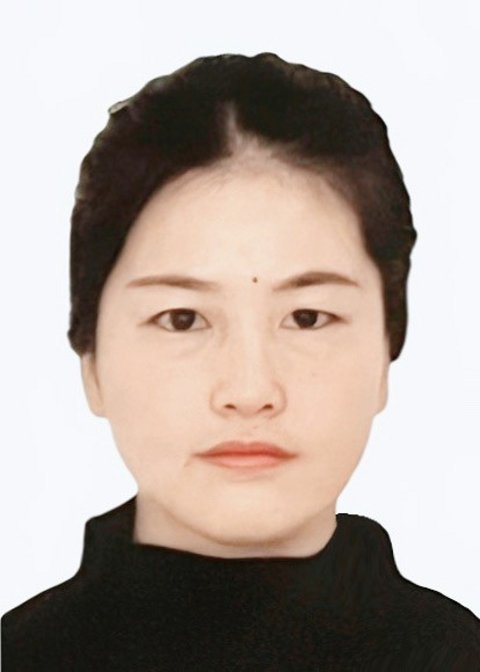
Ruihong Cao
Friedrich-Schiller-Universität Jena
Lessingstraße 14 | CEEC II
07743 Jena
tel: +49 361 9-48500
Curriculum Vitae
Education
- 2021-2024
Friedrich Schiller University Jena | M.Sc. Chemistry of Material - 2011-2015
Tianjin University of Technology | B. Sc. Pharmaceutical engineering
Program
- Master Thesis: Mechanoluminescence of Tb3+ ions doped zinc borosilicate glasses.
Otto Schott Institute of Materials Research, 10/2023-04/2024
The Preparation of Tb3+ ions doped zinc borosilicate glasses.
The glasses exhibit photoluminescence, persistent luminescence, as well as ultrasound-induced mechanoluminescence.
Potential application in optical information storage and smart labelling with opto-acoustic read-out. - Master Internship:Tunable photoluminescence from oxygen-deficient cacium aluminogerminate glasses by addition of nitride.
Otto Schott Institute of Materials Research, 10/2022 to 09/2023
A simple route to create the oxygen-deficient CaO- Al2O3 - GeO2 glasses by addition of AlN are showed in this investigation.
Glasses exhibit blue and red photoluminescence under UV light excitation measured by photoluminescence spectroscopy.
By increasing the AlN content, glasses exhibit blue shift of optical bandgap energy measured by UV-VIS transmission spectroscopy.
Glasses were found to increas mechanical properties by increasing AlN content. - Bachelor Thesis: Synthesis of n-butyl-2-[5-(p-aminophenyl-1,3,4-thiadiazole)] disulfide
Tianjin University of Technology 04/2014 -11/2014
The research is the synthesis of n-butyl-2-[5- (4-amino-phenyl-1,3,4-thiadiazole)] disulfide, which is expected to exhibit a higher anticancer activity.
First, two intermediates of n-butyl-thiourea hydrochloride and then 2-mercapto-5-(4-aminophenyl)- 1,3,4-thiadiazole were synthesized, then, the two compounds were reacted with each other to obtain n-butyl-2-[5-(4-aminophenyl-1,3,4-thiadiazole)] disulfide.
The product was purified by extraction and chromatographic method.
he compound was identified by nuclear magnetic resonance (NMR) and Mass spectrometry (MS).
The influence of reaction time, reaction temperature, and effect of alkali type on product yield were investigated.
Basic skills
- Familiar to the advanced material characterization techniques including XRD, DSC, Raman, FT-IR, UV-VIS, SEM/TEM, AFM, XPS, Al-NMR, Photoluminescence, Mechanoluminescence, and measurements for mechanical properties (Density, Shear modulus, Bulk modulus, Young’s modulus, Poisson’s ratio) of materials.
- Experimental experiences in preparing the glasses, nanoparticles, vinyl acetate, polyvinyl acetate, etc.
- Able to synthesize the chemistry organic compound, and analyze with MS, NMR, etc.
- Computer: Frequent user of Microsoft Office, Origin, etc.
PhD Project
Poled inorganic glass surfaces: Structure-property correlations and their sensitivity to optical stimulation
Anisotropy refers to the directional dependence of a material’s structural, optical, or mechanical properties [1]. Conventional glasses – as homogeneous and isotropic materials – typically lack such aspects which are confined to crystalline materials. However, by processing glasses accordingly, e.g., by applying thermal treatments, electric fields, or mechanical deformation, specific properties can be introduced [2].
In particular, glass poling [3] and ion-exchange [4] enable the formation of localized concentration and stress gradients, thereby inducing structural anisotropies in the resulting glasses. By finely controlling the parent glass composition, e.g., by incorporating polyvalent cations with high stimulus-responsiveness (Ce4+/Ce3+, Tb4+/Tb3+) [5], the conjoint use of such techniques holds promise for achieving functionalized glass surfaces with adaptable chemistries and properties (hardness, photoluminescence, optical transmission).
For this purpose, suitable combinations of glass matrices, redox couples, and processing conditions will be selected. The emphasis will be placed on the local characterization of the glass surface’ structure and chemical composition (by means of Raman spectroscopy, energy-dispersive X-ray spectroscopy, and optical absorption spectroscopy) to target synergies between the two aforementioned techniques. Furthermore, the sensitivity of the glass-constituting polyvalent cations – in environments of high internal stresses – to optical stimulations will be assessed, and the associated relaxation dynamics will be systematically evaluated.
References
[1] Gujral A, Yu L, Ediger M D. Current Opinion in Solid State and Materials Science,2018,22(2):49-57.
[2] Dmowski W, Egami T. Advanced Engineering Materials, 2008, 10(11): 1003-1007.
[3] Fleming S C, An H. Journal of the Ceramic Society of Japan, 2008, 116(1358): 1007-1023.
[4] Gy R. Materials Science and Engineering: B, 2008, 149(2): 159-165.
[5] Paje S E, Garcı́a M A, Villegas M A, et al. Optical Materials, 2001, 17(4): 459-469.